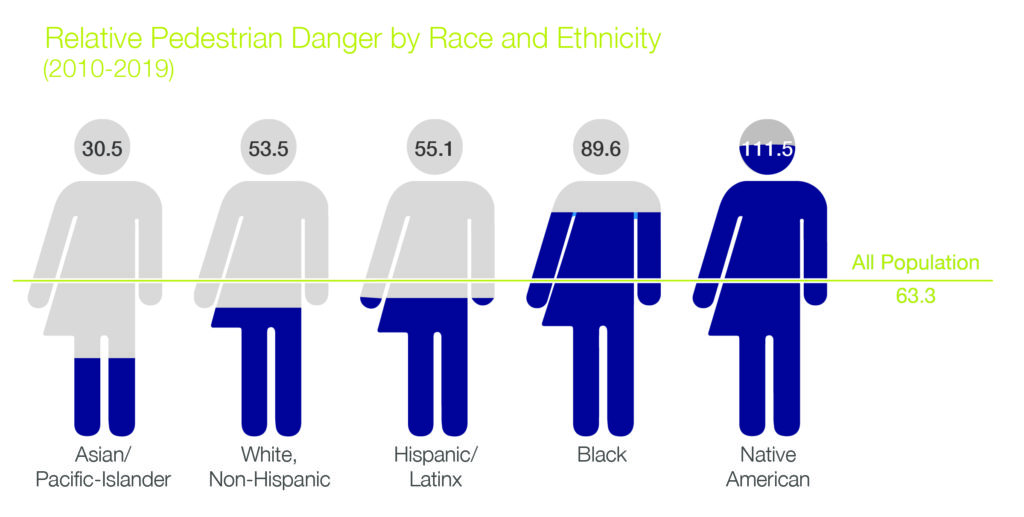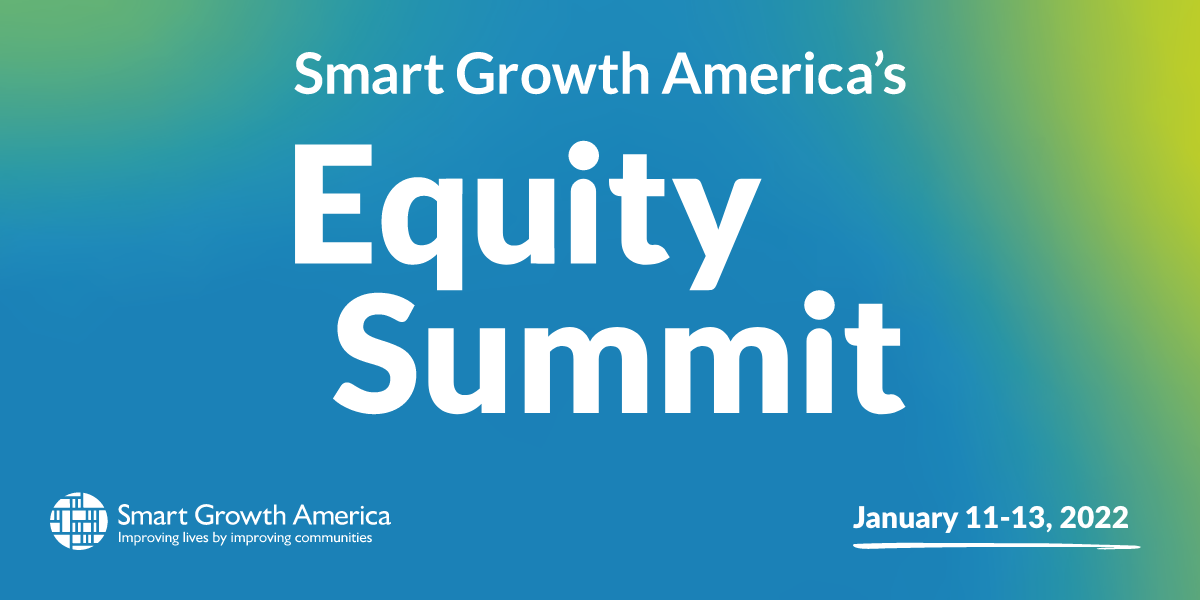Racial Equity

Our country has a sordid racial history of wielding transportation, development, housing, and other governmental programs in ways that harm and divide communities of color, ingraining inequities deep into communities across America that persist today. SGA prioritizes racial equity by seeking changes to all of these programs and policies to restore and repair that damage and ensure that benefits accrue more evenly to everyone, especially those who have typically been left out.
Entire books have been written about these topics, but conventional development rules have created many divides in our country, producing sprawling places marked by zoning that separates people from one another and from the things they need. Our country’s 70-year experiment with sprawling, auto-oriented development has separated people based on wealth, ethnicity, and race and cut off their access to housing, jobs, schools, and services. People of color are most at risk from today and tomorrow’s climate shocks, as well as from the long-term effects of climate change. The massive increase in risk for being struck and killed while walking falls disproportionately on people of color and those in lower-income areas. States and metro areas have intentionally chosen to route highways and interstates through the heart of Black communities—and not just in the past: current highway expansions in Houston, South Carolina, Portland, and others are still targeting these neighborhoods.
We believe that smart growth is the key to improving social equity, as well as fiscal health. As we said during our first Equity Summit in 2021, “if it’s not equitable, then it’s not smart growth.”
Some of our notable work on improving racial equity ››
Improving racial disparities is at the core of a smart growth approach. In 2021 and in January 2022, our Equity Summit focused on how to center improving racial equity in smart growth work, bringing together experts and advocates to turn ideas into action.
Many of today’s inequalities reflect the racism and ableism of the era in which much of our transportation network was built, but they’re also still embedded deeply in today’s federal transportation policy. The goal of addressing these inequalities is central to our transportation team’s priorities. This is why our landmark Dangerous by Design report on the epidemic of preventable pedestrian fatalities focuses largely on the disproportionate burden of death borne by people of color and those who live in low-income areas.

Repairing past inequities animated our 2020 proposal for federal money to tear down divisive infrastructure (like highways), which our advocacy helped turn into a real program in the 2021 infrastructure deal. And our 360-degree look at the biggest transportation challenges to health equity (as well as a bevy of solutions) was developed through rigorous feedback from a huge panel of health and transportation experts from across the country.
Historically marginalized communities, including low-income communities and communities of color, are disproportionately impacted by climate change. As participants in the Kresge Foundation’s Climate Change, Health & Equity cohort, SGA is supporting the Partnership for Southern Equity on a strategy to reduce climate and health disparities in six zip codes in Atlanta. SGA’s work includes research and technical assistance related to healthy neighborhood design, considering access to transit, jobs and energy efficient housing, as well as scoping for workforce development opportunities in clean energy.
For more than five years, we’ve been equipping local leaders, planners, transportation staffers and others to deeply engage the arts, culture, and creativity to better reflect and celebrate local culture, heritage, and values—especially from underrepresented communities—as they design and plan transportation projects.

We performed first-of-its-kind research which showed how utilizing form-based codes can help communities add more homes for more people while increasing property values and tax revenues—but not necessarily the overall cost of housing, leading to more equitable development. And over the years we’ve written about how our current approach to zoning has not only been used to divide and harm certain people, but how a different approach to zoning can actually make more equitable development the norm.
Learn about our other two organizational priorities
Learn more about Smart Growth America and smart growth
Learn more about our work and how we do itWhat is smart growth?


